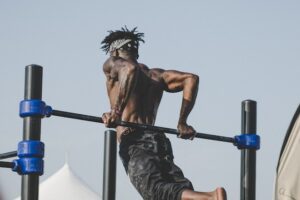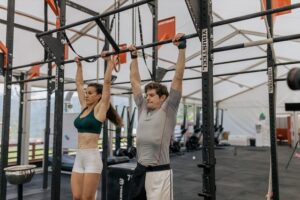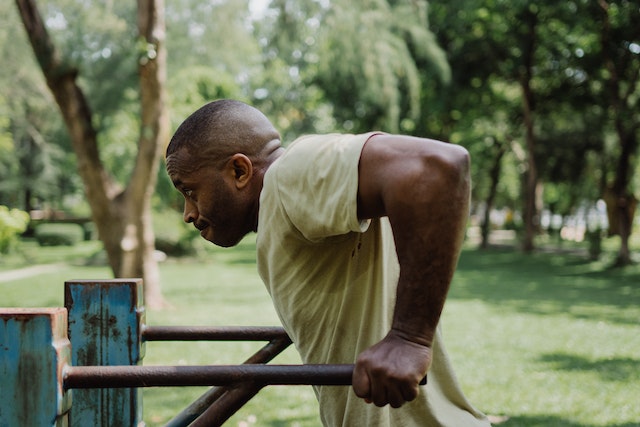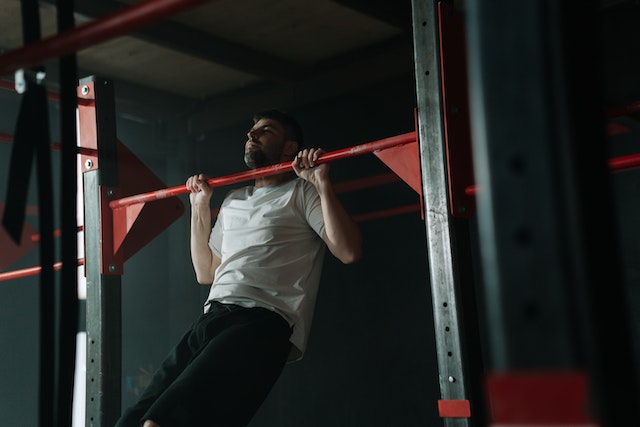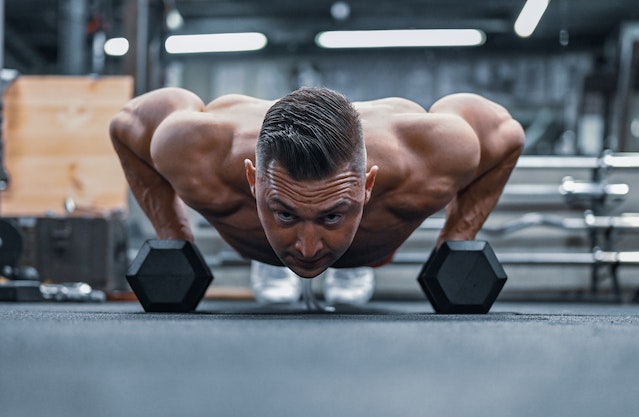What is the back lever?
The back lever is a static strength skill, that involves holding your body completely straight and horizontally, facing the ground only with your hands touching the bar. It’s similar to the front lever
Back elver derived from gymnastics where it’s considered one of the easiest moves – it’s rated as an A on a scale of A – F, with F being the most difficult. But in calisthenics, it’s considered an intermediate-level skill
Back lever prerequisites
The back lever puts the shoulder joint through an unnatural and awkward stance. If the range of motion in this area is limited there will be an increased risk of injury.
Good shoulder mobility and the ability to move its joint around a range of motion greater than the usual is one of the basic requirements.
Being able to do skin the can will ensure that you have enough shoulder mobility and it will also improve your upper trunk stability
Another important thing needed for the back lever is shoulder strength. I recommend you can do 15 dips before starting with a back lever.
Muscles worked during the back lever
It’s important to know the main muscles involved in the back lever to better understand the movement and to know what to focus on while training for it.
The back lever works most of the muscles in our upper body
The primary muscles worked in the back lever are:
- latissimus dorsi
- biceps brachii
- trapezius
- core muscles
- deltoids
Additional secondary muscles worked include:
- forearms
- rhomboids
- glutes
Back lever grip
Before discussing proper form and progressions let’s talk about grips we can do back lever with and the difference between them.
The back lever can do done with a pronated (overhand) or a supinated (underhand) grip.
The back lever with a supinated grip is harder because it puts much more pressure on the biceps and elbow than the pronated grip. Therefore I recommend using a pronated grip at the beginning.
Proper form
Proper form is the most important aspect while learning any calisthenics skill. By starting to learn with the correct form you will get better results. When the movement is performed correctly you will progress faster, it will be easier and that can help you prevent injury.
Scapula position
The scapula should be depressed and protracted
With a protracted scapula (shoulders leaning forward) you additionally support yourself by putting your arms on lats thus limiting your shoulders movement and gaining more stability in the back lever position.
Straight arms
With bent elbows, you generate more power from your biceps instead of the shoulders as it should. Straight arms make the exercises easier and also better looking.
Keep your body straight
It’s easy to be bent at the hips. That’s why the core muscles are important. It is the weak abdominal muscles that are responsible for stabilizing your hips. Remember to keep your knees straight and fully locked
Engage the whole body
Although the back lever is mostly about upper back and core strength it’s a full-body movement. It involves your whole body, so don’t forget about that.
To maximize your back lever training, engage every muscle you can. From glutes and quads that will help with hips stabilization up to the neck and toes will help to generate even greater tension in the whole body, which will translate into increased strength
Progressions
As in most calisthenics skills, we have 6 main progressions, which are:
- tuck
- advanced tuck
- straddle
- half lay
- one leg
- full
And the back lever is not different.
The goal of progressing in the back lever is to straighten your legs more and more each training until you’re completely horizontal and straight.
Basically, there’s an infinite number of “progressions”. Every detail, even an inch difference in how your leg is extended can be treated as a different progression.
So, remember that these 6 are the main points of reference and you don’t necessarily have to hold one progression for x time to go to the next one. Because there are so many options between.
Tuck back lever
In tuck only the back is horizontal and knees are drawn to the chest as much as possible.
Advanced tuck back lever
The next one is advanced tuck where the hip angle – between the torso and tights is about 90 degrees. With the legs extended forward, the center of gravity changes, and with that level of difficulty.
Straddle back lever
In straddle, the legs are completely straight but as wide apart as possible.
Half lay back lever
The next one is a half lay, in which we hold our body almost completely straight with the fact that our legs are bent at the knees and go up
One leg back lever
One leg involves holding the back lever with one leg straight and the other close to the chest as in a tuck.
Main exercises
These are the 2 main exercises with the use of the progressions above to improve your back lever.
Back lever Hold
The first and most obvious way to improve your back lever is static, isometric hold. That’s the best exercise to train with for the back lever. It can be done with any of the progressions and with the assistance of the resistance band.
But don’t just rely on holds, add also negatives, because otherwise, you will be strong only within 10-15 degrees from that completely horizontal line. And at some point, you will hit a plateau
Back lever Negatives
The next are negatives – eccentric exercises consisting of lowering your legs down from the top position with legs touching the bar – all in a back lever position with a completely straight body.
Eccentric exercises are great to improve muscle strength
Accessory exercises
Plank
Similarly to the back lever, it works core muscles and it also requires scapula protraction, which is necessary for the back lever.
Ab wheel rollouts
A great exercise to work on core stability, and exactly like plank teaches you proper scapula protraction
Dragon flag
Another great way to work on the back lever is a dragon flag. It involves exactly the same muscles as the back lever – core and lats. That exercise is a little more advanced and you might not be able to perform it at the very beginning.
Conclusion
The back lever is an element that, first of all, requires time, and thus patience. Remember to properly prepare for learning this element and realistically assess your level of advancement, so as not to throw yourself into the deep water and try to make more difficult progression than you are able to do. Consider your health.
The key to achieving this goal is, above all, the accuracy of the exercises performed in order to properly engage the necessary muscle parts. So if you have chosen the back lever as your goal, give yourself time. Do not rush and do everything diligently and regularly.

